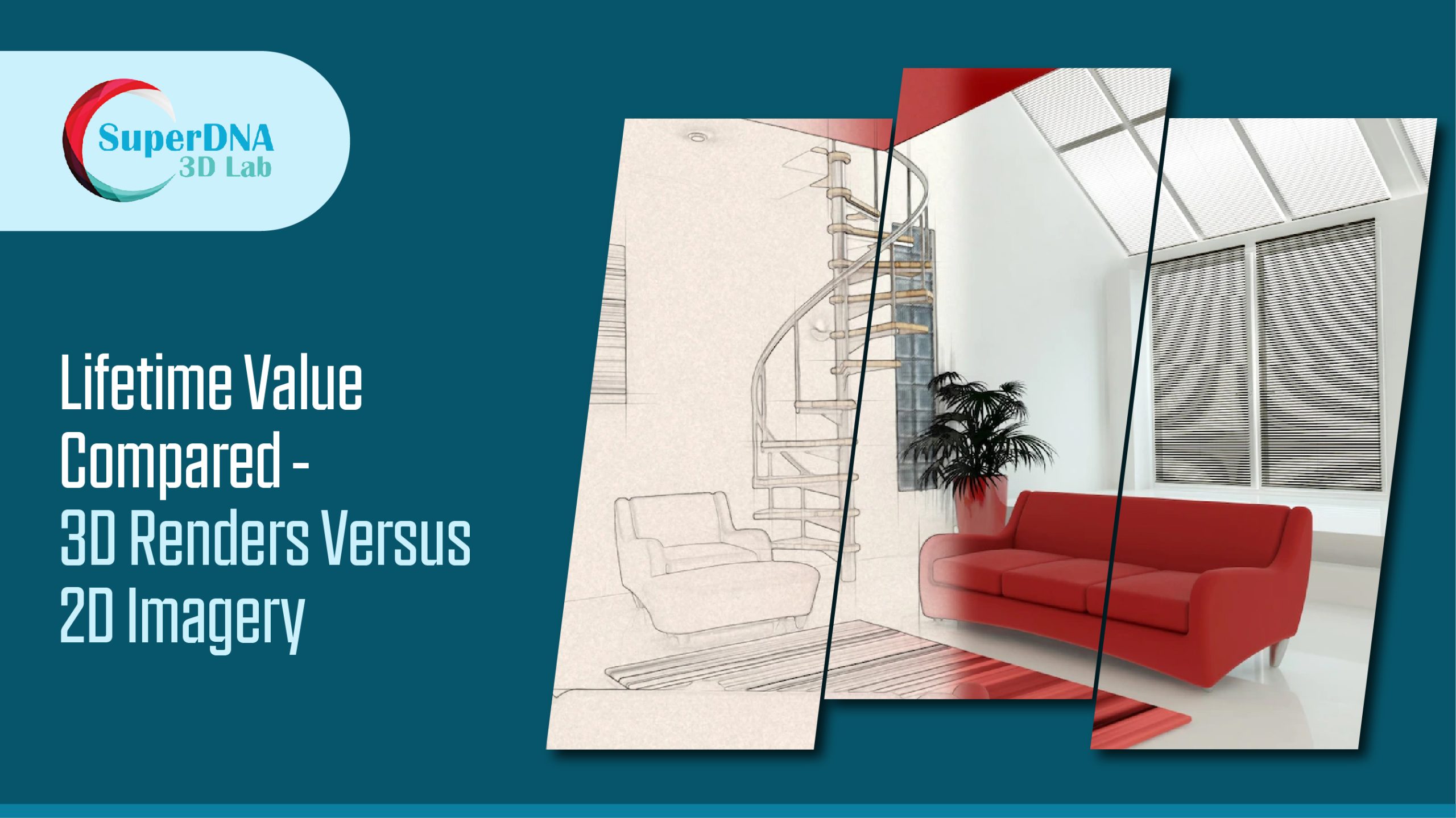
Let’s just say that the lifetime value of a 3D render depends on how intelligently you put it to use. The more strategic you are with 3D product visualization, the better results you are going to achieve. However, if we look at the statistics and overlook the most common fears and misconceptions, it is very easy for you to increase your website conversions by 340%. Yes! That’s the latest statistic and it turns out to be quite the game changer.
Before we delve a little deeper into a comparison of the lifetime value of a 3D render and 2D imagery, let’s understand the basic points of difference between the two.
Creation
3D renders and 2D images are based on two distinct principles. To create 2D imagery, you need to rely heavily on equipment and imitation. After all, contemporary photography captures the image in the highest possible resolution and prints it down on high-quality paper. The same can be turned into digital files as well which can be used on various online marketplaces. On the other hand, it takes a lot of mathematical equations and an understanding of geometry and proportions to create a 3D render of a particular product. The basic difference is the process and resource investment.
Perspective
When it comes to creating 2D images, you are making use of a few predetermined angles. You can view the product from perspectives that are already decided upon before the photography begins. On the other hand with 3D renders, you can change the perspective in real-time. This allows you for a more flexible view of the product which the former is incapable of providing.
Modification
You can make modifications and changes when you set up the product to be photographed. You can change the backdrop, modify the lighting, and alter the positioning and angle of the product before you click pictures. Making changes to a 3D product is facilitated right from the start. The way you design the product, position the lighting, create the texture or even choose the viewport of your choice, everything has an impact on the final render. You can make changes to its components, colors, materials, and a lot of other elements and have a variation in renders depending upon your requirements.
Now That We Have Already Addressed The Basic Differences Between 2D Imagery And 3D Product Visualization, Let’s Understand How Latter Enjoys A Longer Lifetime As Compared To Traditional Photography.
3D Models Are Adjustable And Reusable
Are you working on a new product? Do you wish to expand your future product collection? If yes, you can adjust and reuse your existing 3D models without having to invest in any new 3D assets. For as long as you intend to keep even a single initial product in your catalog, you can redesign and modify all your early 3D assets to represent your new offerings. Because these meshes give you the liberty to add components, features, and different elements, you do not have to scrap them but only modify them as your needs change.
Highly Compatible With Any E-Commerce Platform
Another aspect that adds to their overall lifetime value is the fact that they can be used on any number of e-commerce platforms. The file formats that are available today are easily compatible with Amazon, eBay, GSMArena in the case of smart gadgets and devices, and many other online marketplaces that support 3D product viewing capabilities. You just have to export your 3D files onto those websites and you are done.
Can Be Rendered Fast And Trouble-Free
Just like these models can be created super fast, the modifications and changes in them also take only a few minutes. If you want to add a different component or modify a certain section of a 3D asset, everything can be achieved in a matter of a few minutes or 1 hour tops.
Practically Unlimited Customizations
This brings us to a very important point which is unlimited customizations. Regardless of whether you have decided to add two or three products to your catalog or a different lineup of assortments to your portfolio, the unlimited customizations that 3D assets have room for will stun you. You can simply copy-paste 3D models from one folder to another and make changes as you diversify and innovate. This makes 3D models very versatile and flexible which again adds to their overall lifetime value.
Animation Derivation
So you invested in a host of 3D assets. Do you know that they can be made to jump around, sing the most popular songs, and dance to your favorite tunes? Animation is a great feature that only 3D assets have. Let’s say that you aim for more engagement and higher sales, you can always entice your customers through interactive and fun animation videos. This transition from 3D product viewing to animated products adds more value to your marketing function.
Conclusion
You must understand how to make the most of your 3D assets. They prove to be extremely affordable in the long haul, and with a little bit of training, you can recreate your product catalog without incurring any costs at all. For more information, you can always get in touch with SuperDNA 3D Lab.